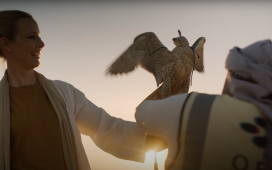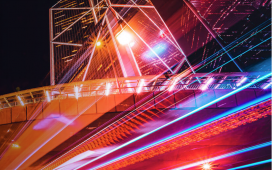
Saeed Alshamsi, Managing partner of lifeonscreen Dubai
When Kylie Jenner launched her direct-to-consumer skincare line, Kylie Skin, in May this year, she veered from her normal social-heavy ad campaigns, which have worked pretty well for her Kylie Cosmetics range. Instead, the youngest billionaire in the world opted to introduce her skincare products through 5,800 screens spread across shopping malls, highways, and bus shelters in 1,000 US cities. Even though the Kylie brand is only realising the power of digital out-of-home (DOOH), Fortune 500 tech and media companies such as Amazon, Google, Apple, and Netflix increased their spend on DOOH in 2018.
DOOH returns for marketers also peaked at $6bn in 2018, with 18 per cent of global out-of-home (OOH) ad sales, tripling the share of DOOH. The number of screens has also doubled from 160,000 to 300,000 in the past four years. This is partly why a recent study by Magna and Rapport places OOH advertising ahead of all other classical forms of advertisement in terms of growth, projecting a 28 per cent global share of DOOH in the advertising sphere by 2023.
Here’s how DOOH can kill three birds with one stone:
BIRDS ONE AND TWO: HIGHER AUDIENCE REACH AND STRONG BRAND RECOGNITION
These statistics are not surprising, given the huge impact that DOOH has on diff erent brands. The success of DOOH lies in its ability to easily reach audiences and raise brand awareness through customised content, thus increasing ROI for advertisers. The Kylie Jenner skincare range, for example, reportedly sold out all its products in six minutes after it was launched. While Jenner’s celebrity status and large social media following might have played a role, it is impossible to ignore the audience reach from 4,300 roadside digital billboards and 1,500 digital video screens across 200 shopping malls.
It is not just DOOH ad campaigns of this magnitude that capture the attention of large audiences. Research shows that 70 per cent of people spend most of their time outdoors, making DOOH the opportune advertising method to reach consumers outside their homes. Developed outdoor advertising markets such as the US, UK and China reach billions of people through digital outdoor adverts. If you consider the busy Dubai International airport, traffic along Sheikh Zayed Road and other roads as well as the hundreds of malls, hotels, and parks in Dubai, DOOH offers the same potential for marketers in the region.
Studies have reported increased brand awareness and brand action among customers who are exposed to DOOH adverts. With the right content, brands can use DOOH to attract both new and old customers. Brand recognition can be further boosted by combining DOOH with diverse marketing channels. Facebook recently revealed that Gen Z are more likely to go online to check out a brand after interacting with an outdoor advertisement.
BIRD THREE: INTEGRATION OF TECHNOLOGY IN DOOH TO OPTIMISE ADS
Closer to home, while DOOH is steadily picking up in the MENA region, the advertising industry is yet to grasp its potential and fully exploit it like its European, American and Chinese counterparts. The main obstacle for most marketers in the region has been calculating the actual return on investment of DOOH.
Fortunately, DOOH deftly integrates technology to allow for performance measurement and optimisation of campaigns. The use of geolocation data was one of the biggest milestones in DOOH and it made it easier for marketers to use the mobile location data of their consumers to design the content they put on digital boards and contextualise this to specifi c conditions. However, this infringed on the privacy of the consumers and with GDPR laws it is harder to obtain and use consumer data without consent.
This challenge has prompted lifeonscreen to innovate the visual sensor, a new sophisticated technology that will enhance the measurement of different metrics of DOOH ads whilst upholding privacy. We have been offering advertisers a unique and affordable self-serving platform where they can literally advertise anywhere, any time. On the other hand, we partner with screen owners to off er them a revolutionised AdPlayer that can transform any screen into advertising space. Our visual sensor will make it possible for both advertisers and screen owners to track the performance of each ad and optimise content while adhering to privacy laws.
Even though we currently measure important metrics such as the reach and demographics from each ad, our visual sensor will be a game-changer as clients will have access to more accurate details of their ad campaigns in real-time. With this technology, we intend to optimise ads to target specific conditions that will yield the highest returns for each ad.
Ultimately, given the current trends and statistics, no marketer can overlook the growth and potential of DOOH. Whether you are an established brand, expanding your spheres, or a start-up looking to attract new customers, DOOH offers you a channel to reach out to a wide audience and advertise your brand in an engaging and non-intrusive manner.
That you can play with different contextualised creatives and experiences, while maximising on omnichannel and retargeting capabilities, makes it the most valuable and futuristic advertising medium. You don’t have to splurge on a billboard along Sheikh Zayed Road. Whether it’s a lobby, gas station, public transport or even in-store space, a digital screen can help you tell your story to different consumers.









